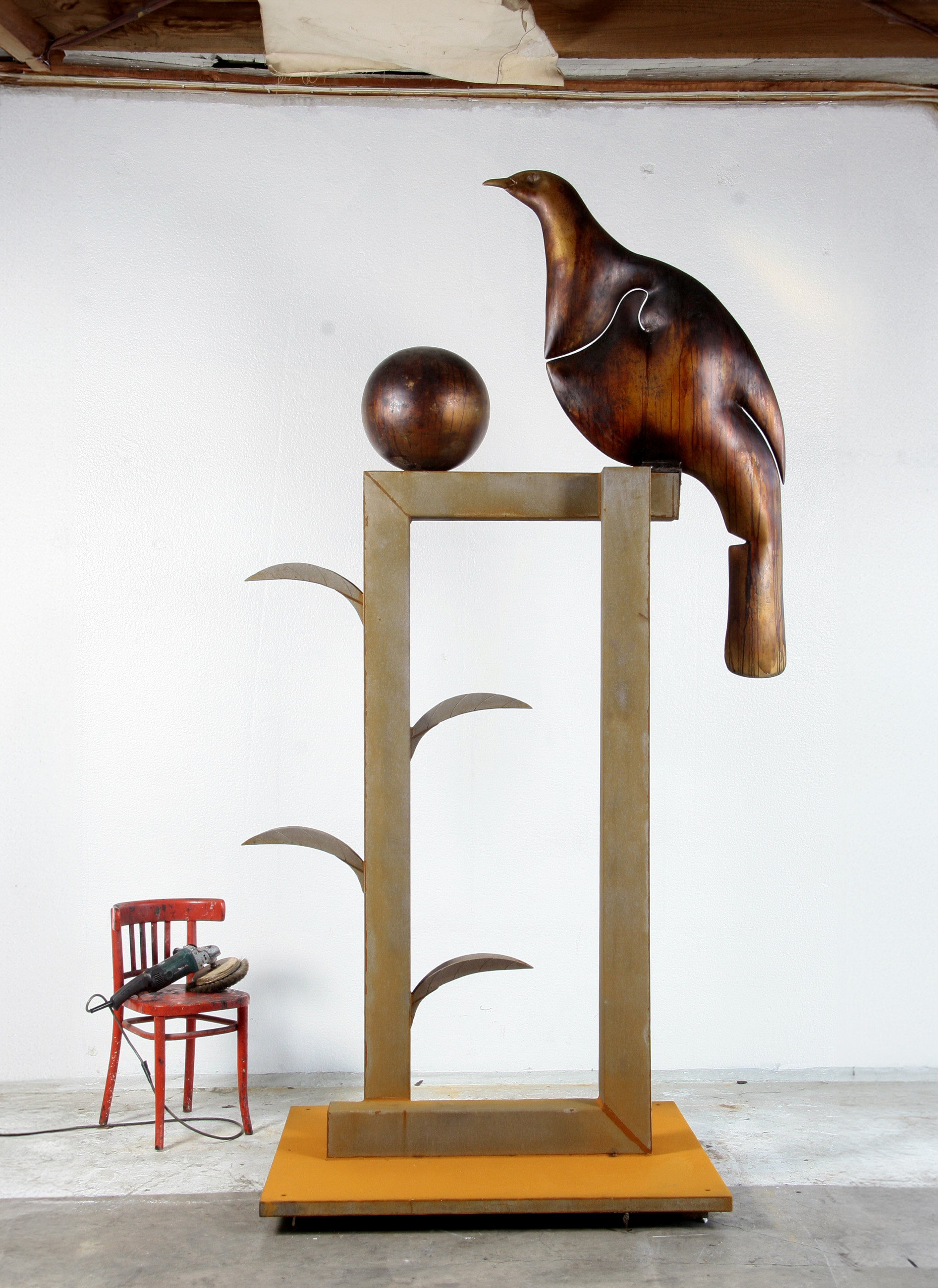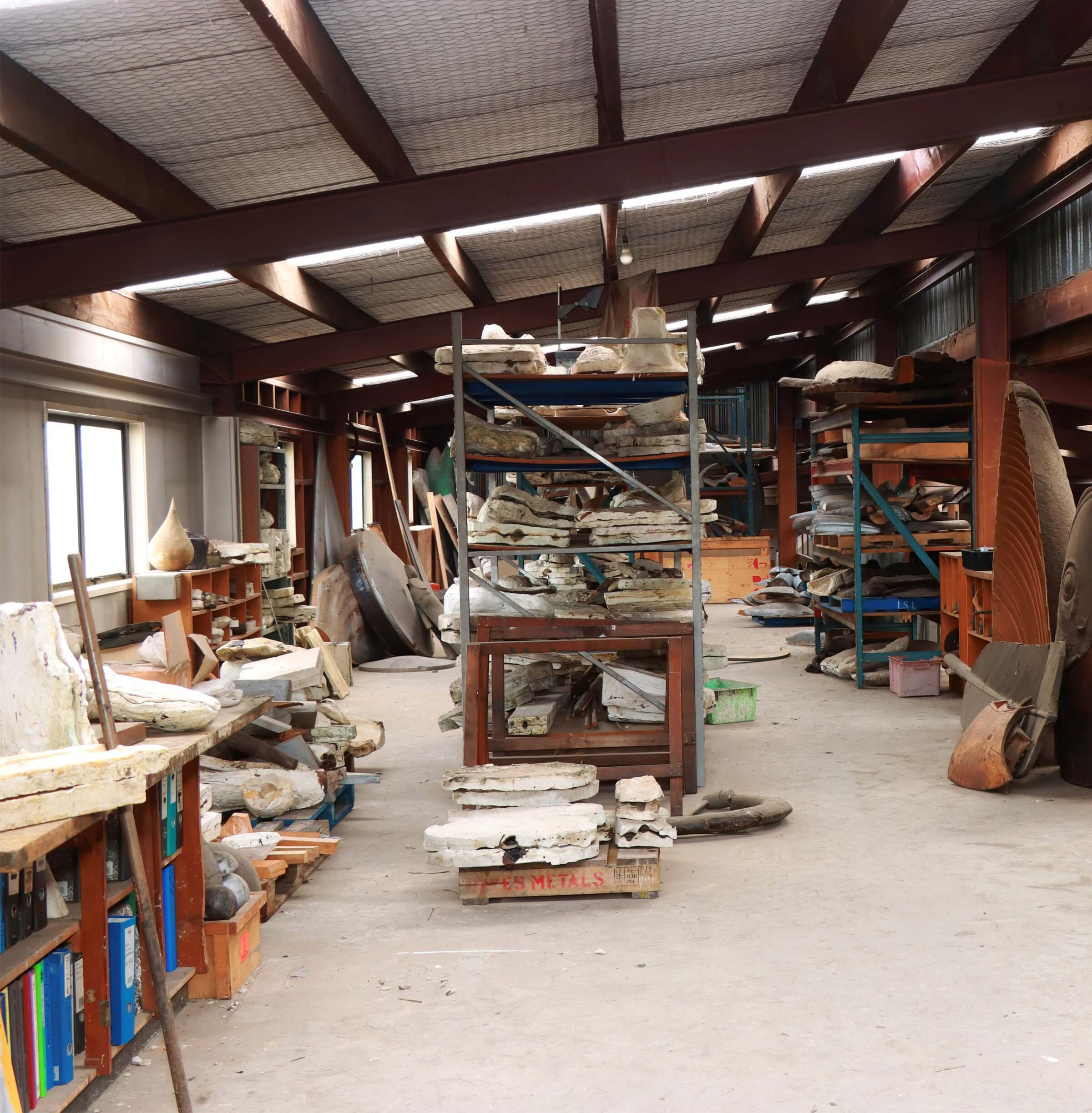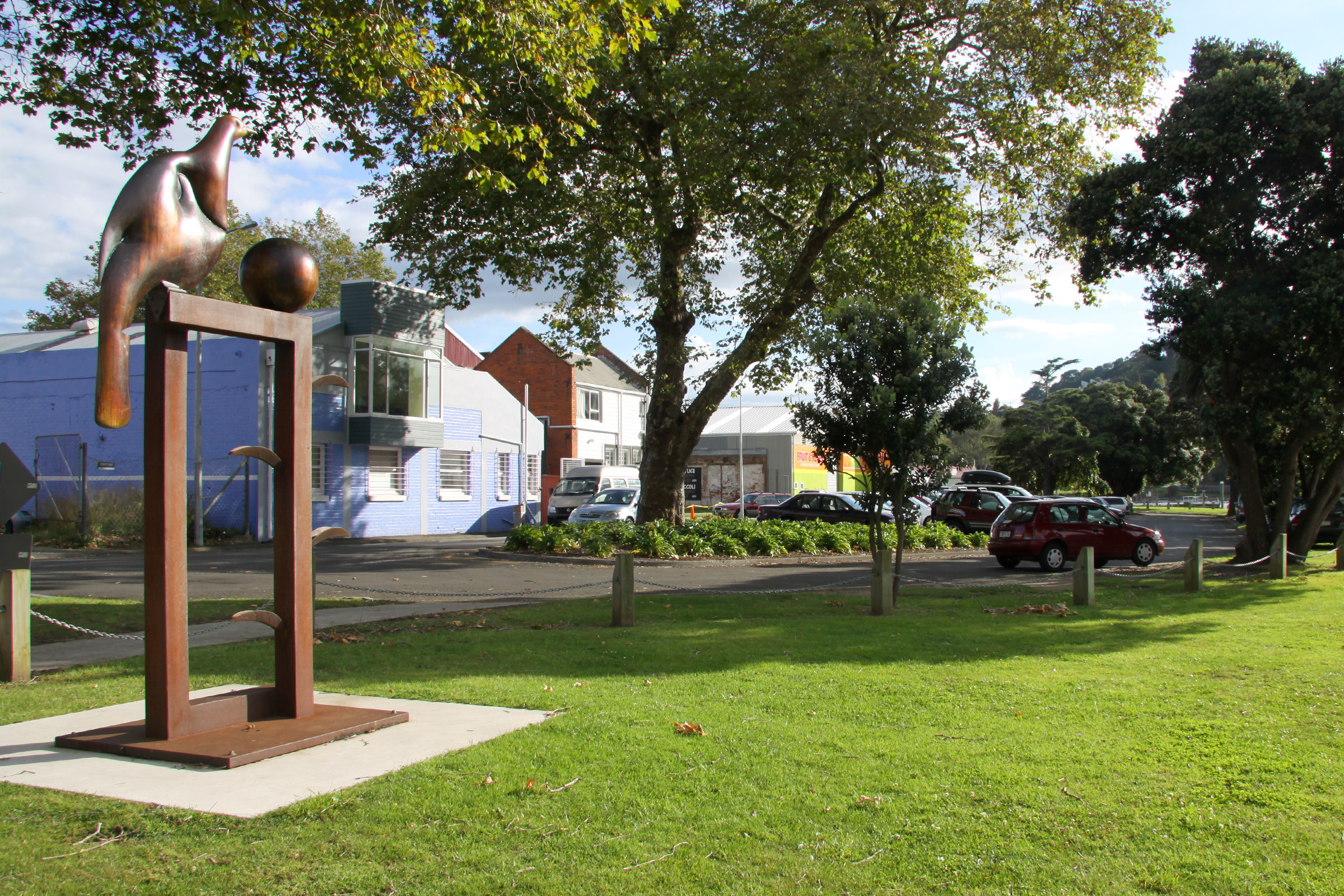2010 Kererū
2010 Kererū
The bird is positioned on a Corten steel framework opposite a ball that looks as if it could roll off at any moment. It is a gracious illustration of the sense of stillness a watcher encounters when glimpsing a bird in the New Zealand bush, and also suggests the delicate balance of nature.
Near the isite Visitor Information Centre, corner Drews Avenue and Moutoa Quay, Whanganui
Commentary
In 2010 the Whanganui District Council held an inaugural sculpture event, Sculpture Wanganui 2010, where selected sculptures were placed on the city side of the river. It was a competition where one work was chosen by judges to be purchased for the city. The intent was to place sculptures and vitalise an area which previously wasn’t well used by residents.
Dibble’s work was not picked as the winner, but received the People’s Choice Award. After the event the Council negotiated to also purchase Dibble’s work. Funds were donated, in part, from PowerCo Wanganui Trust, and the sculpture has remained here at the river site, near the Whanganui isite Visitor Information Centre.
The artwork features the kererū (New Zealand pigeon), large numbers of which occupy the area of pristine bush in the upper reaches of the Whanganui River.
The bird is positioned on a Corten steel framework opposite a ball that looks as if it could roll off at any moment. It is a gracious illustration of the sense of stillness a watcher encounters when glimpsing a bird in the New Zealand bush, and also suggests the delicate balance of nature.
This area of Whanganui now is a vibrant part of the city, where the coal-fired Paddle Steamer Waimarie launches, and the site of the well-known Saturday markets.

